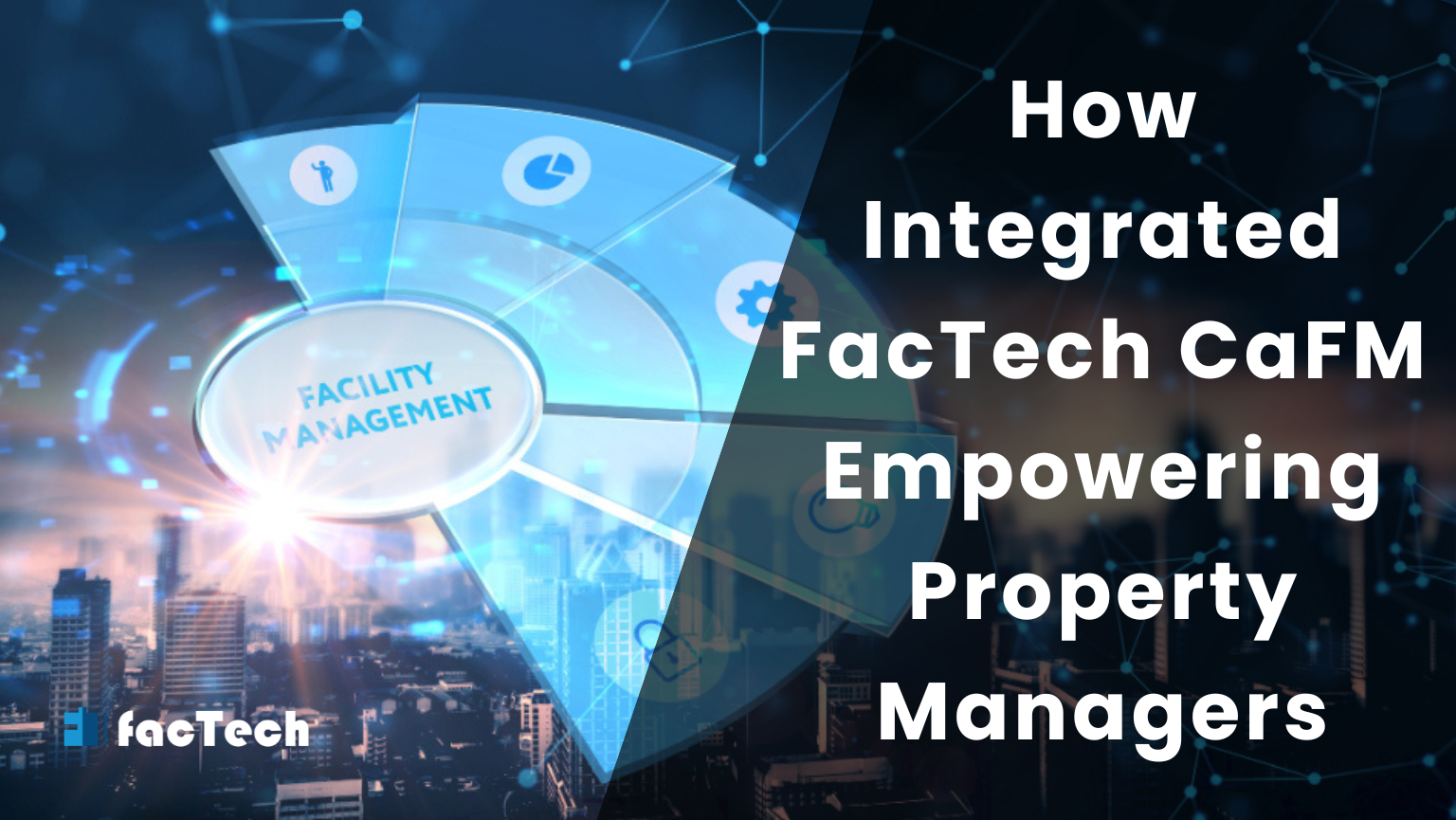What Problems CAFM Solve ?
What Problems CAFM Solve?
Computer-Aided Facility Management (CAFM) has completely changed how companies look after their real estate. CAFM systems provide a comprehensive answer to a variety of facility management problems by utilizing technology.
Read more: CAFM.
Let’s examine a few of the main issues that CAFM can assist with:
1. Ineffective Asset Management: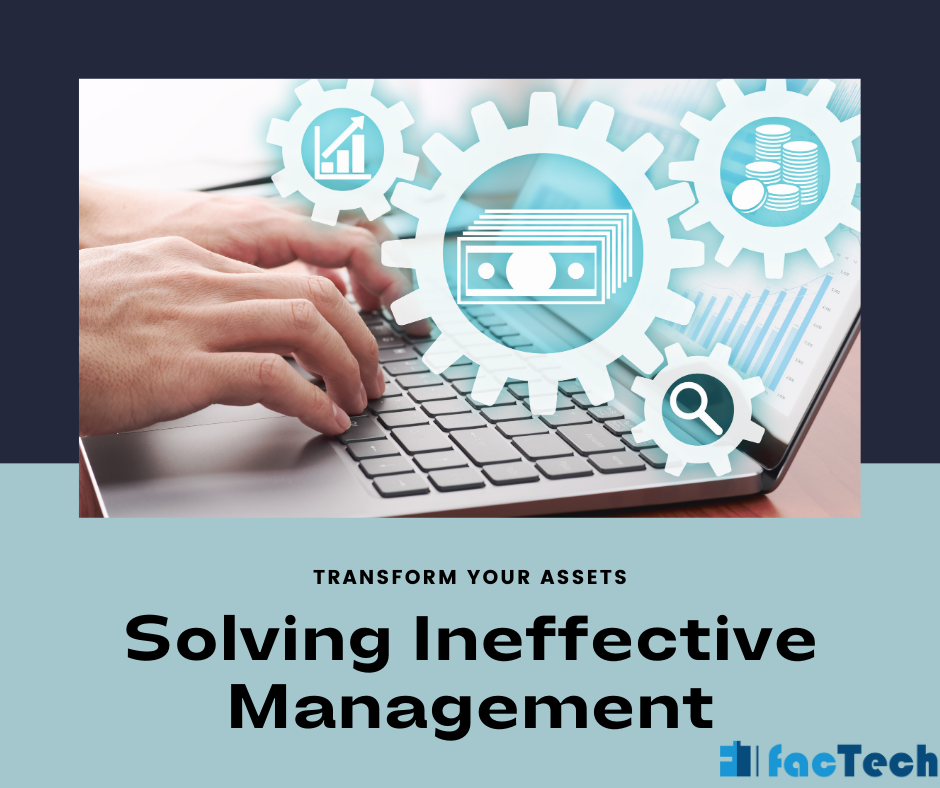
Systems known as Computer-Aided Facility Management, or CAFM, aim to completely change the way businesses handle their physical assets. CAFM assists in addressing typical problems linked to inadequate asset management by offering a consolidated platform for asset tracking, maintenance, and optimization.
Here’s where CAFM can have a big influence:
1. Centralized Asset Database:
Comprehensive Record-Keeping: A centralized database is created by CAFM systems to contain all asset data, including location, attributes, maintenance records, and warranties.
Enhanced Visibility: By guaranteeing that all parties involved have access to the same data, confusion and mistakes are decreased.
2. Preventative Maintenance Scheduling:
Proactive Approach: Within CAFM, preventative maintenance schedules can be created according to the age, usage, and manufacturer recommendations of the asset.
Preventive maintenance reduces unplanned downtime and errors by addressing possible faults before they become critical.
3. Lifecycle Management of Assets: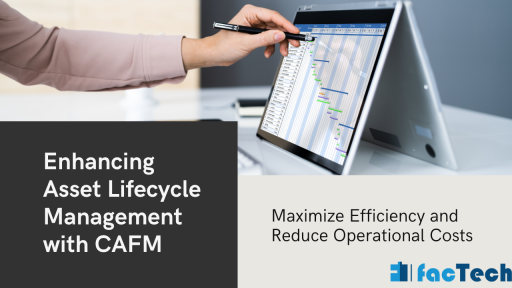
Tracking and Analysis: CAFM systems monitor the performance of assets over the course of their lifetime, offering insightful information about their state and remaining usable life.
Best Timing for Replacement: By using this data, companies may maximize their return on investment by making well-informed decisions about when to replace assets.
4. Reduction of Costs:
Optimized Allocation of Resources: By assisting in the identification of underutilized or overutilized assets, it enables firms to manage resources more effectively.
Lower Maintenance Expenses: CAFM may drastically save maintenance costs by extending asset lifespans and eliminating breakdowns.
5. Enhanced Compliance:
Regulatory Adherence: By tracking asset compliance with rules and regulations, CAFM systems can assist businesses in lowering their risk of fines and penalties.
Readiness for Audits: Audits can be made easier and compliance efforts can be shown with a well-maintained CAFM database.
6. Decisions Driven by Data: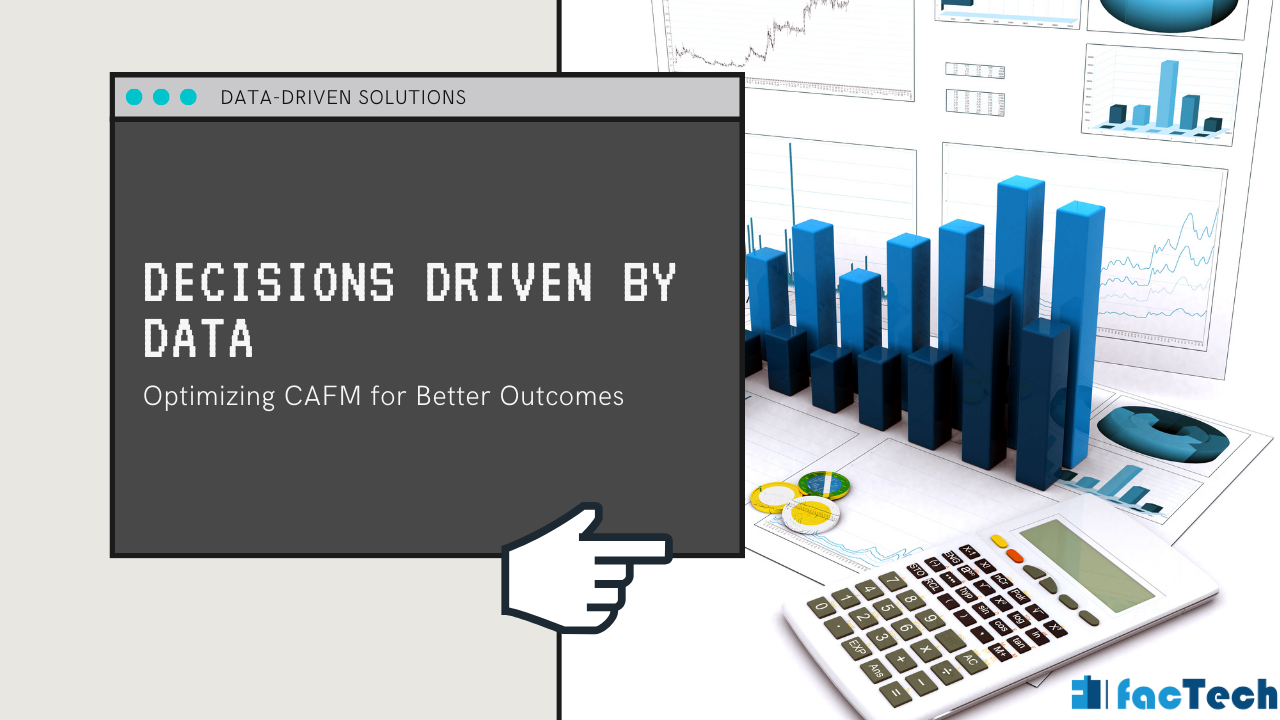
Analytics and Reporting: With the powerful reporting features offered by CAFM, businesses are able to examine asset data and make informed decisions.
Enhanced Techniques for Asset Management: Organizations can improve performance and hone their asset management strategies by spotting trends and patterns.
7. Maintenance and tracking:
A unified database for tracking assets, their whereabouts, and maintenance records is offered by CAFM systems. This minimizes downtime and optimizes maintenance schedules.
8. Preventative upkeep:
CAFM systems can increase the lifespan of assets and save unexpected expenses by extending asset lifespan and scheduling preventive maintenance by analyzing asset performance data and forecasting possible failures.
To sum up, CAFM is an excellent technique for tackling the problems associated with inadequate asset management. CAFM offers a consolidated platform that facilitates asset tracking, maintenance scheduling, and data analysis. This platform helps enterprises lower costs, increase efficiency, and guarantee compliance.
2. Space Utilization Concerns:
Unused or congested areas: In order to determine which spaces are crowded or underutilized, it systems can examine space consumption patterns. By using this data, total efficiency can be raised and space allocation can be optimized.
Intelligent tracking: Real-time space use monitoring is provided by certain CAFM systems, enabling quick adjustments to meet shifting demands.
Read more: Space management.
3. Complex Compliance Requirements:
Regulatory compliance: CAFM systems can assist firms in adhering to a range of regulations, including legislation pertaining to the environment, health and safety, and energy efficiency.
Reporting and documentation: It systems can minimize error risk and streamline compliance operations by automating reporting and documentation processes.
4. High Operational Costs: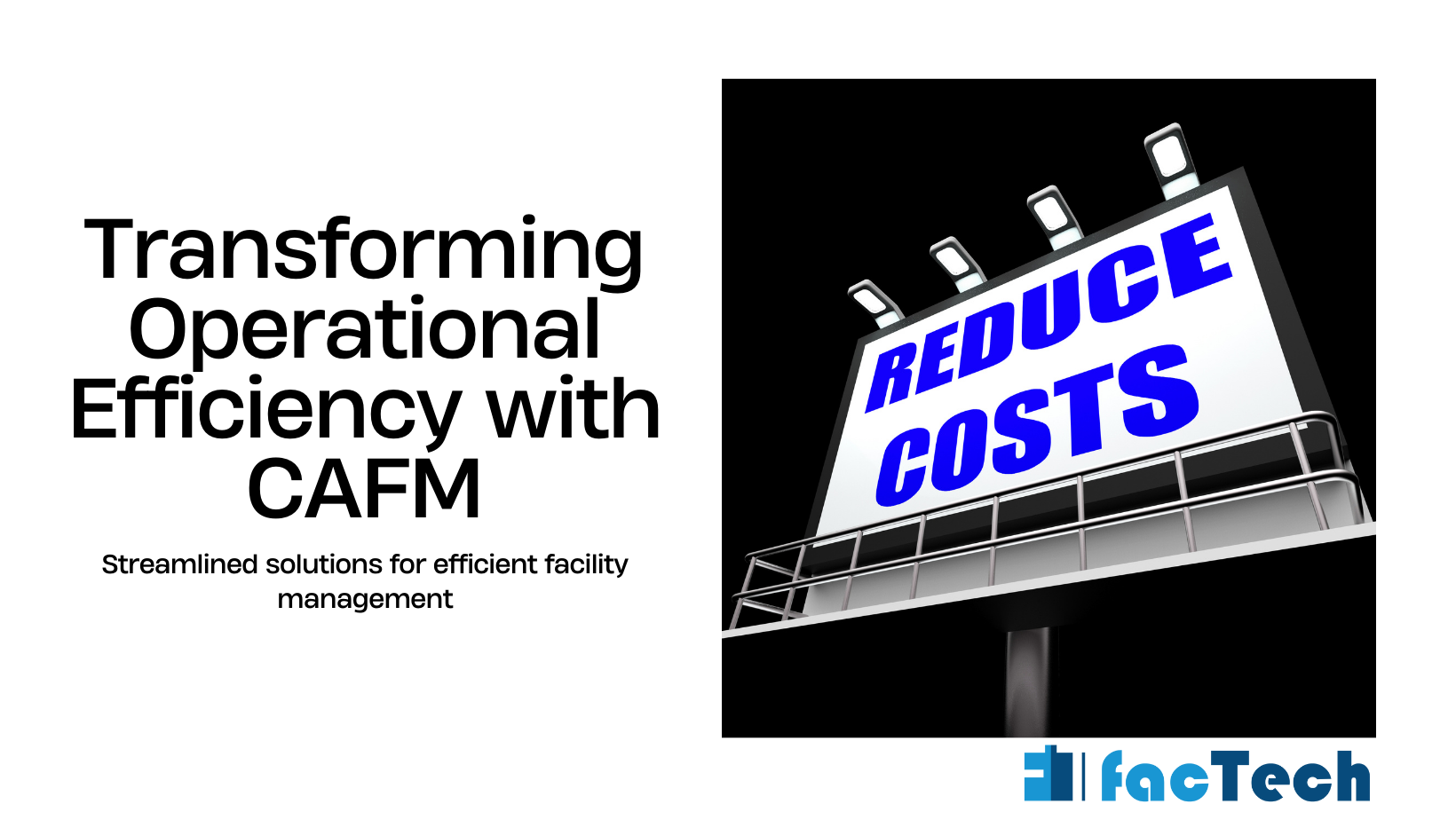
CAFM systems can assist in identifying areas, such as energy use, maintenance costs, and facility services, where operational costs can be decreased.
Important Domains in Which CAFM Cuts Costs
Energy Administration:
Real-time monitoring: The systems can track energy usage in real time and pinpoint inefficient regions.
Automated controls: it can automatically modify lighting, temperature, and ventilation depending on occupancy and outside factors by interacting with building automation systems (BAS).
Energy optimization: To spot patterns and maximize energy use, it can examine data on energy usage.
Management of Maintenance:
Scheduling preventative maintenance: CAFM systems have the ability to plan preventive maintenance chores according to the manufacturer’s recommendations, equipment age, and usage.
Work order management: It minimizes administrative overhead by streamlining the work order process from inception to completion.
Inventory management for spare parts: It assists in optimizing inventory levels, averting stockouts and unnecessary expenses, by monitoring machinery and spare parts.
Use of Space: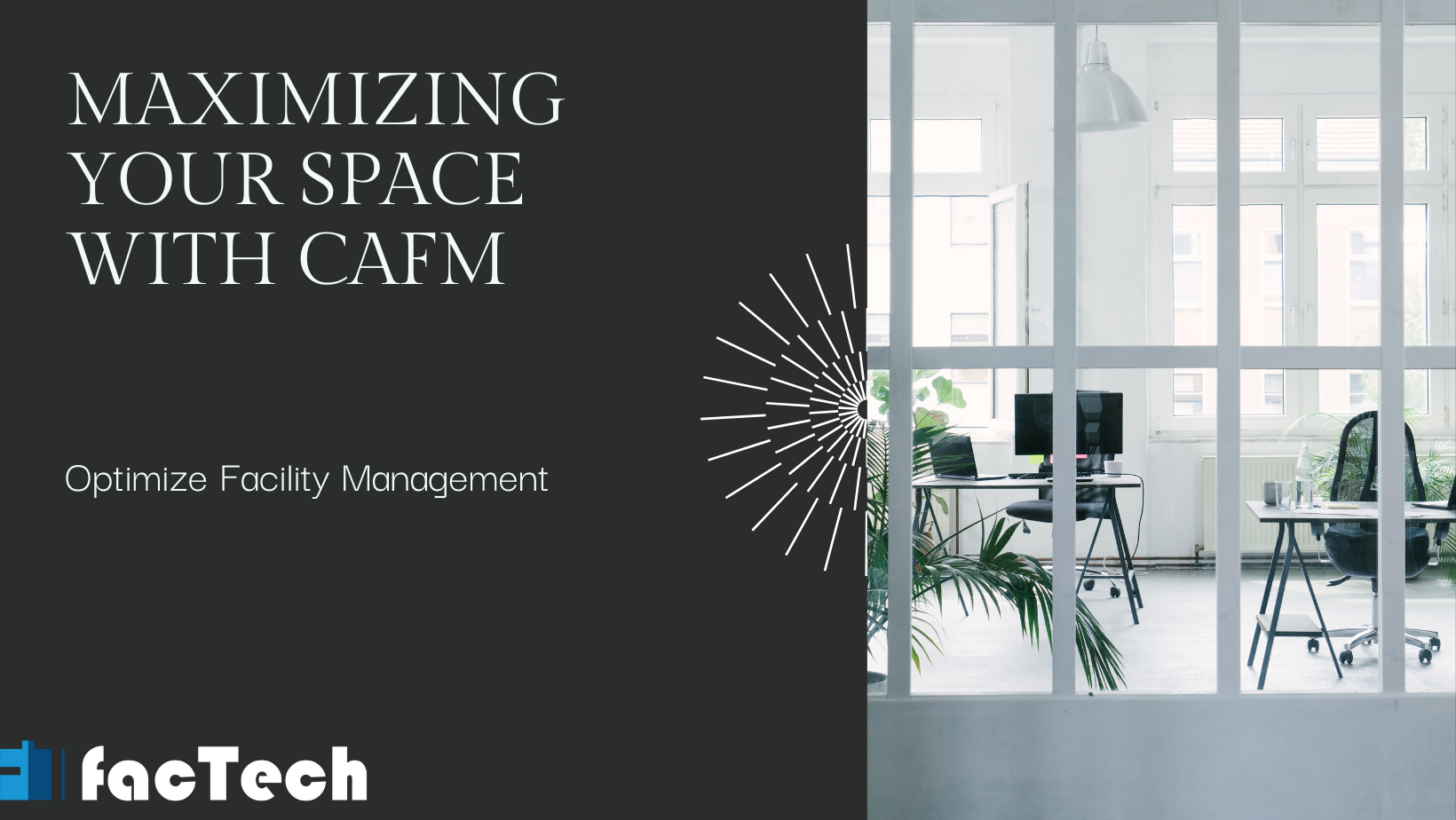
Planning for space: CAFM may help with this, making sure that the available space is used as efficiently as possible.
Monitoring occupancy: It can determine regions that are over or underutilized by monitoring occupancy rates.
Management of relocations: It can assist in the effective management of relocations when necessary, reducing expenses and disturbance.
Asset Administration:
Asset tracking: The systems are able to keep track of an asset’s location, state, and maintenance history.
Lifecycle management: It can assist in determining when equipment needs to be improved or replaced by tracking asset lifecycles.
Asset value: With important data for insurance and financial reporting, it may help with asset appraisal.
Analytics and Reporting:
Data-driven decision-making: Facility managers may make well-informed decisions based on data thanks to the many reports and analytics that CAFM generates.
Cost analysis: By analyzing operating costs, CAFM can pinpoint areas for cost-cutting and improvement.
5. Inadequate Coordination and Communication: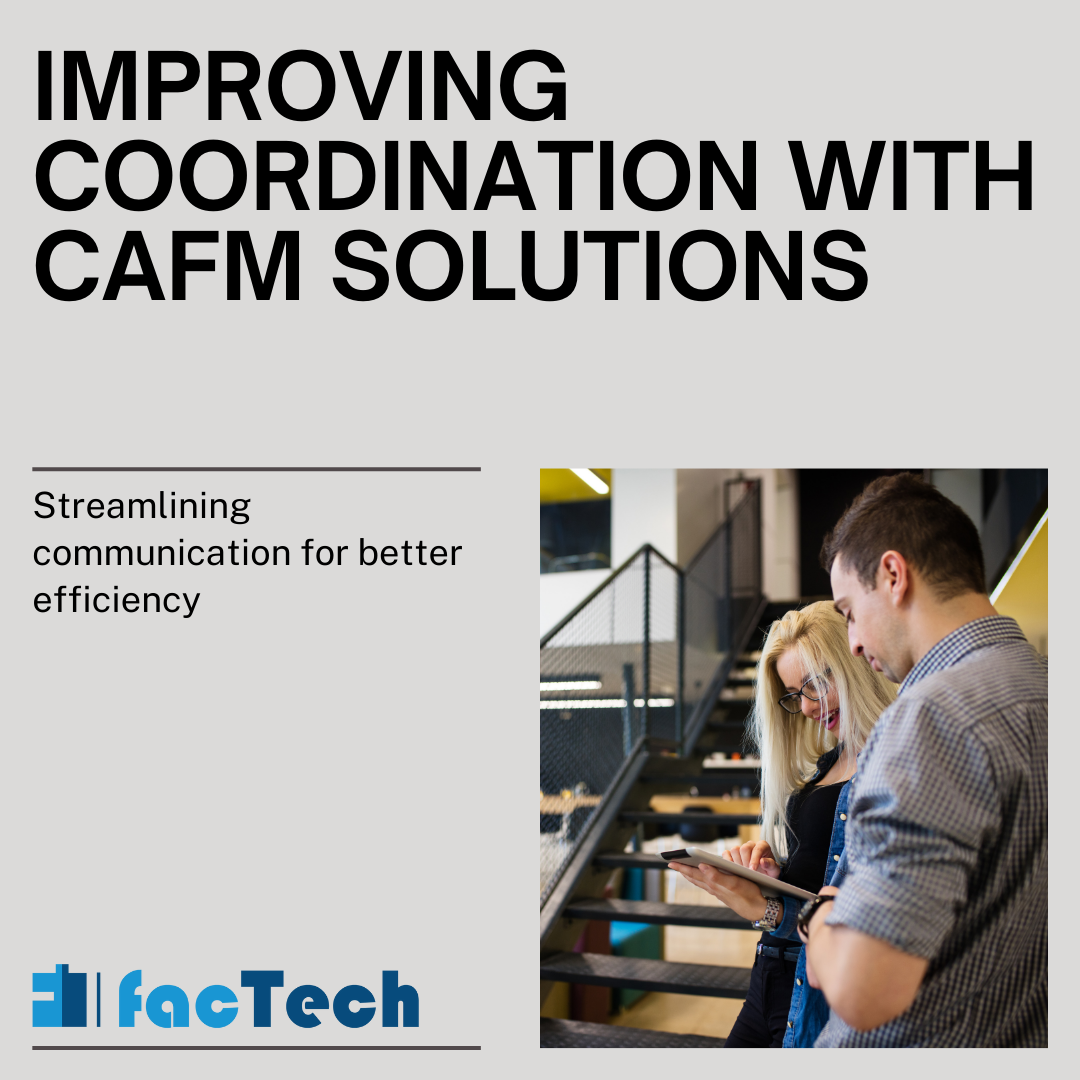
CAFM are essential for enhancing teamwork and communication in facility management. Through the provision of a consolidated platform, CAFM assists in the following areas of facility operations management:
1. Single source of truth:
Centralized Information Repository: All facility-related data, such as asset details, maintenance schedules, work orders, and space usage, is centrally stored in a CAFM system.
Enhanced clarity: By ensuring that all parties have access to the most recent information, this centralized access helps to avoid misunderstandings and discrepancies.
2. Effective Channels for Communication:
Integrated Messaging: CAFM systems frequently come with integrated messaging or notification features that facilitate prompt and direct team member engagement.
Management of work orders: Work orders can be assigned, modified, and monitored inside the system, offering a transparent line of communication for maintenance requests and updates.
3. Improved cooperation:
Collaborative processes: CAFM systems can facilitate cooperative processes, allowing several team members to collaborate on assignments or projects.
Real-time updates: To keep everyone informed, modifications made to work orders or other data are updated instantly.
4. Automated Alerts and Notifications:
Proactive communication: The system has the ability to automatically notify users of impending maintenance, past-due work orders, and urgent problems.
Decreased missed deadlines: This guarantees that appropriate steps are made as soon as possible and helps avoid missed deadlines.
5. Analytics and Reporting:
Data-driven Decision-Making: CAFM systems produce analytics and reports that shed light on facility performance and point out areas in need of development.
Informed decision-making: Through data analysis, facility managers are better equipped to deploy resources and make more informed judgments.
To sum up, CAFM systems provide an effective answer to a variety of facility management problems. It may assist firms in achieving considerable cost savings, enhancing productivity, and creating a more sustainable and efficient workplace by enhancing asset management, space use, compliance, operational efficiency, and communication.
FAQs
CAFM: What is it?
A software program called CAFM unifies several aspects of facility management, including energy management, asset management, maintenance, and space usage.
How is CAFM operated?
Data about assets, facilities, maintenance jobs, and other topics are gathered, stored, and analyzed by CAFM systems. Subsequently, this data is employed to enhance decision-making, lower expenses, and optimize operations.
Principal Issues That CAFM Can Resolve With Ineffective Maintenance Management
Reactive maintenance:
By planning preventive maintenance and monitoring asset lifecycles, CAFM can assist in averting malfunctions.
Cost control: CAFM can assist in lowering maintenance expenses by streamlining maintenance schedules and cutting down on downtime.
Inefficient Use of Space: Better space allocation and usage can be achieved through space planning, since it can assist in identifying underutilized or overutilized spaces.
Move management: CAFM can make relocating staff or assets easier.
Absence of Asset Observability
Asset tracking: CAFM has the ability to track an asset’s location, state, and maintenance history over the course of its life.
Inventory control: By controlling inventory levels, it can assist avoid stockouts and overstocking.
Having Trouble Complying:
Regulatory compliance: It can assist in making sure that rules like OSHA, LEED, and ISO are followed.
Auditing: CAFM can offer proof of compliance and expedite auditing procedures.
Exorbitant Energy Bills
Energy management: It can assist in locating assets that use a lot of energy and putting energy-saving measures in place.
Environmental: By cutting waste and energy use, it can help with environmental projects.
What are some extra Advantages of CAFM?
Better decision-making: To assist in making well-informed decisions, it offers data-driven insights.
Improved communication: Facility managers, maintenance personnel, and other stakeholders can communicate more effectively while using it.
Enhanced productivity: It can simplify procedures and cut manual tasks.






